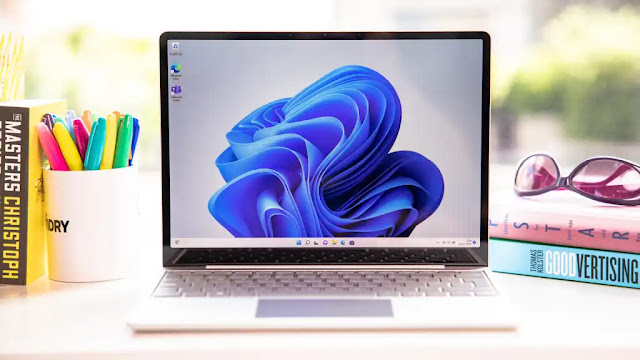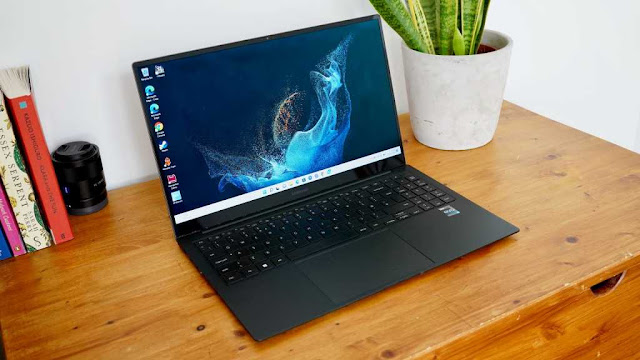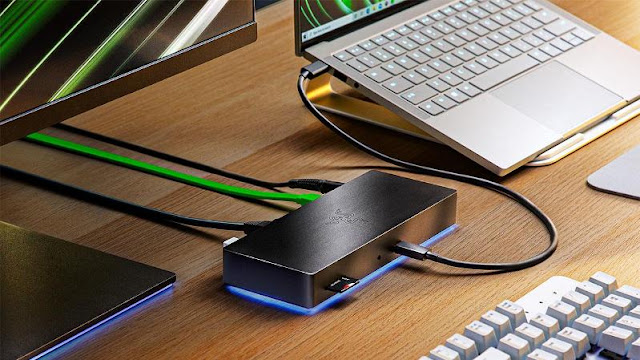Razer's Blade Pro 17 offers the perfect blend of power and portability for on-the-go-gamers. Here's our full review.
Should I Buy The Razer Blade Pro 17?
Our Verdict
- The Razer Blade Pro offers desktop-level power in an impressively thin, lightweight form.
- Boasting a Nvidia RTX graphics alongside a Core i7 processor, 16GB of RAM and a Full HD 114Hz display, the Blade Pro is an ideal - if not slightly expensive - laptop for gamers on the go.
Price When Reviewed
- From $2,499
The Black Friday sales season is here! The best deals are often not on Amazon. The prices shown above are the best available now, though you may need to buy quickly as some deals will sell out.
Not long ago gaming laptops were big, bulky beasts that were more akin to a portable PC tower than a sexy, sleek laptop. However, companies like Razer have made leaps and bounds in the laptop design department over the past few years and now offer products that are both powerful and sleek.
Razer’s Blade Pro 17 is the company’s top-of-the-line 17.3in laptop for gamers, offering desktop-level graphics in a chassis that’s not only 25 percent thinner than its predecessor, but small enough to fit in most 15in laptop bags too. Is it enough to solidify its place amongst the best gaming laptops available? We think so.
We’ve spent some time gaming on the Razer Blade Pro 17, and here’s our full review.
Price & Availability
If you thought the £1,699/$1,899 starting price of the standard Razer Blade 15 was high, you might wince at the £2,399/$2,499 starting price for the Razer Blade Pro. It doesn’t end there either, as you can pick up the mid-range model for £2,679/$2,799 and the high-end model for £3,079/$3,199.
There's also a newer version of the Pro that offers a 4K display with 120Hz refresh rate, but that's not on sale in the UK just yet. Those in the US can pick it up for $3,699.99 though.
Those interested in buying the Razer Blade Pro 17 can do so from Razer along with the likes of Amazon, Scan and Currys PC World.
The high-end price tag puts it in direct competition not only with Razer’s own high-end Blade 15 (2019), but the likes of the Alienware Area 51M (from £1,948) and budget-friendly Aorus 15 X9 (from £1,999).
Here’s a breakdown of the Razer Blade Pro 17 pricing to give you a better idea of what’s on offer:
- 144Hz FHD display, 16GB RAM, 512GB, RTX 2060 – £2,399 / $2,499 / €2,669
- 144Hz FHD display, 16GB RAM, 512GB, RTX 2070 Max-Q – £2,679 / $2,799 / €3,049
- 144Hz FHD display, 16GB RAM, 512GB, RTX 2080 Max-Q – £3,079 / $3,199 / €3,499
Design & Build
The Razer Blade Pro 17 follows a similar design aesthetic to the rest of the Razer collection, including the Razer Blade 15 and even the Razer Phone 2, complete with a black-and-green colour scheme and a bold, angular design that looks sleek. It’s certainly a step away from the in-your-face gaming laptop design on offer by the likes of Alienware, with the understated Razer Blade Pro 17 looking just as good at the office as it does playing games at home.
The chassis of the Razer Blade Pro 17 features an anodized matte black finish which in addition to looking good and keeping fingerprints at bay, helps the laptop stay scratch- and scuff-free, although we’re not in the position to start defacing it in the name of testing. It should also prove quite sturdy, as the entire chassis is milled from a single block of aluminium.
Despite featuring a 17.3in display, the 0.6mm bezels that surround it allow the chassis to stay relatively small – in fact, the Razer Blade Pro 17 is 25% smaller than the last-gen Pro and boasts similar dimensions to 15in laptops we’ve used in the past, measuring in at 395 x 360 x 19.9mm and weighing 2.75kg. We can confirm that it’ll just about fit into a 15in laptop bag too, making it easier to transport between home and work.
Despite the chassis magic, the Razer Blade Pro 17 has a larger surface for cooling when compared to the 2018 variant, which translates to better heat dissipation and better performance during long, intense gaming sessions.
The Blade Pro 17 isn’t the thinnest laptop on the market - that goes to the LG gram 17 (a non-gaming laptop) - but this offers a high-end gaming experience and, arguably just as importantly, a variety of full-size ports.
Compared to the laughable amount of ports included with some modern laptops - sometimes just one USB-C - the Razer Blade Pro 17 is about as connected as a laptop can be. It features not only standard USB 3.2 ports, but USB-C and the latest HDMI 2.0b port, allowing you to output games to your TV, use it to power your VR sessions and plug in a suite of accessories.
Here’s a full list of the ports on offer across all iterations of Blade Pro 17:
- 3x USB 3.2 Gen 2 Type-A Ports
- 2x USB 3.2 Gen 2 Type-C Ports (Shared with Thunderbolt 3 Port)
- 1x Thunderbolt 3 Port
- 1x RJ45 - 2.5Gb ethernet
- 1x Power Port
- 1x HDMI 2.0b
- 1x UHS-III SD Card Reader
There’s also a lack of a hefty power brick (or two, as is the case with the Area 51M) with the Blade Pro sporting a single streamlined charging brick. It uses Razer’s custom charging port rather than the USB-C on offer from competing laptops, but we don’t think that’s too much of an issue – as long as you don’t damage or lose the cable anyway!
Keyboard & Trackpad
The Razer Blade Pro 17 sports an interesting keyboard setup. It features per-key RGB lighting powered by Razer’s Chroma software along with anti-ghosting tech, giving it the high-end gamer vibe, but it doesn’t deliver in terms of performance - and that’s a bit of a shame given the high price tag of the product.
Our main gripe is to do with the keyboard layout itself; it’s lacking a full numberpad and customisable Macro keys. We wouldn’t expect it on a 13- or even 15in laptop, but the Blade Pro 17 has plenty of space on offer – it’s just not properly utilised. There’s space not only to the left and right of the keyboard, but above and below too. Why not move the stereo speakers and offer gamers a full-size edge-to-edge keyboard like Alienware’s Area 51M?
While the typing experience is quick and reliable, it’s certainly not mechanical, and the button-presses feel a little soft and squishy compared to the satisfying click provided not only by most gaming keyboards, but Razer’s own range of gaming keyboards. It’s a surprising move considering the laptop is supposed to be the ‘Pro’ of the range, and one that we hope Razer addresses in the next iteration.
Beneath the keyboard, you’ll find a large glass trackpad. It supports both tap and click input, although there is a little too much click resistance for the left-click compared to the right-click. It helps differentiate between left- and right-clicks, but we’d have preferred to have less resistance on the side we use more frequently.
Click feedback aside, the trackpad is great for browsing the internet and working, but most gamers will want to buy a dedicated gaming mouse for the best possible experience.
Screen
As we’ve mentioned above, the Razer Blade Pro sports a 17.3in display, and unlike other laptops on the market, the display offering is the same across all variants of the laptop. Whether you get the entry-level model or premium model, you’ll get the same 1920 x 1080 144Hz LED display with incredibly thin 6mm bezels.
It’s a great move from Razer, as the 144Hz refresh rate makes everything look smooth and allows games to run at much higher framerates. We’re also a huge fan of the matte finish on the display, which helps negate annoying reflections, although it’s not the brightest we’ve ever seen.
In our testing, we found that it maxed out at 264cd/m2 and generally speaking, we always have the brightness on full when using the laptop for work and play. That's a bit short of the 300 mark we look for, especially on a laptop this expensive.
It’s colourful, offering 97% of sRGB, but only 75% of Adobe RGB, the colour gamut favoured by designers. This isn’t an issue if you’re mainly using the Blade Pro 17 for gaming, but if you’re looking for something to design with, there are more accurate options on the market.
Specs & Performance
Much like with the display, regardless of the model you choose, you’re going to get a 9th-gen six-core i7-9750H processor with a 2.6GHz base speed, boosted to 4.5GHz with Max Turbo. It’s the same story with RAM and storage, with all variants boasting 16GB Dual-Channel DDR4 2667MHz RAM and a 512GB PCIe NVMe SSD alongside an additional M.2 slot to further upgrade the storage post-purchase.
The only real difference is in terms of graphics; all feature Nvidia RTX cards, but only the mid and top tier laptops feature Max-Q cards. The base model comes with the RTX 2060, while the mid-tier option boasts the RTX 2070 Max-Q and the top-tier sports the RTX 2080 Max-Q. If that’s not enough, you could always pick up Razer’s Core X eGPU to house a desktop card.
For reference, we’ve been testing the base model with a 9th-gen core i7, 16GB of DDR4 RAM and an Nvidia RTX 2060 GPU, and performance is what we’d expect from an entry-level RTX, although there are cheaper, more powerful options on the market if you can do without the Blade Pro 17’s sleek design.
As you can see in our benchmark results above, the Razer Blade Pro 17 came in below the Aorus 15 X9 in every test despite costing £200 more. Admittedly, the Aorus 15 X9 sports a more powerful RTX 2070 GPU so the higher results aren’t surprising, but it’s worth noting the premium that you’re paying for Razer’s design aesthetic and the larger, faster 144Hz display.
We've also included the Razer Blade 15 from last year for comparison as well as a top regular laptop in the Huawei MateBook X Pro. Note that the Alienware Area 51M has mega performance but costs a lot more - we tested a £3,799 model.
Comparison aside, the Razer Blade Pro 17 scored 19,162 in GeekBench 4’s multi-core CPU test. GPU-wise, the laptop managed an average of 122fps in Total Warhammer at medium, and 73fps when set to ultra. That drops down slightly in the more graphically-demanding Ghost Recon: Wildlands, scoring 84.5fps at medium quality and only 50fps at ultra quality.
While the benchmark results suggest that it’s capable of running games at a decent 60fps+ framerate with Ultra-level graphics, it’s more suited to high or even medium-quality graphics – especially if you want to hit high framerates and take advantage of that 144Hz display.
The Blade Pro 17 sports an Intel AX200 chipset for Wi-Fi, offering Wi-Fi 6 (802.11a/b/g/n/ac/ax) capabilities alongside Bluetooth 5.0 and an RJ45 Ethernet port with theoretical speeds of up to 2.5Gbps, ideal for gaming, streaming and just about anything else you need.
You’ll notice a 1Mp 720p HD webcam and array microphone sat above the display, which are good enough for video calling but not much else. The key feature here is the Windows Hello-supported IR webcam that sits beside it, enabling you to unlock your laptop with your face instead of a password.
Audio-wise, the Razer Blade Pro sports a stereo speaker setup housed to the left and right of the keyboard, helping direct the audio towards your ears.
Of course, they’re no replacement for a decent gaming headset, but the quality of the speakers is surprisingly good with very little distortion at high volumes, even during intense gunfights, and there’s noticeable stereo separation so you can get a bit of an idea of where the sound of footsteps is coming from.
Battery Life
It’s no secret that gaming laptops aren’t great in the battery department, often offering no more than a couple of hours of battery – and that’s when you’re not gaming. After all, most gamers would prefer more powerful internals over long battery life as most of the time, the laptop will be used plugged into the mains.
The Razer Blade Pro 17 actually sports a smaller battery than the standard Blade 15, offering a 70.5Wh battery compared to the 80Wh battery of the high-end Blade 15. It’s still a decent battery compared to the likes of Alienware Area 51M, but you won’t be getting all-day battery life.
In fact, in our battery benchmark tests, the Razer Blade Pro 17 lasted 4 hours and 22 minutes – and that’s only playing a 720p movie on loop at 120cd/m2 (44 percent brightness in this case).
Of course, you could increase the battery life somewhat by dropping the 144Hz refresh rate to 60Hz, but that’ll lower the overall gaming experience on offer by the Blade Pro 17.
Verdict
The Razer Blade Pro 17 is a phenomenal laptop in terms of design, boasting the same sleek angular look as not only the rest of the Blade collection, but the Razer Phone too. The 17.3in display isn’t the brightest we’ve ever seen, but the 144Hz refresh rate enhances the gameplay experience and the slim bezels mean the laptop chassis is similar to a standard 15in laptop.
However, that design comes at a premium, with the Razer Blade Pro costing more than the likes of the Aorus 15 X9 despite having less powerful internals. You can get more powerful variants of the Blade Pro 17 with RTX 2070 and 2080 Max-Q cards, but again, there’s a premium compared to other laptops in the market.
Game performance is fairly decent considering the entry-level RTX GPU, with the laptop boasting 60fps+ in most game benchmarks, and the ray-tracing support makes games look incredible without additional impact to gameplay.
You get a decent array of ports and stereo speakers, too. However, the keyboard - while colourful with Chroma lighting - is a bit of a let down in terms of performance.
Specs
- Windows 10 Home (64-bit)
- 9th Gen Intel Core i7-9750H 6 Core (2.6GHz/4.5GHz)
- NVIDIA GeForce RTX 2060 (6GB GDDR6 VRAM)
- 17.3in Full HD 144Hz, 100% sRGB, 6.0mm bezel, factory calibrated
- 512GB PCIe NVMe SSD
- 16GB Dual-Channel (8GB x 2) DDR4 2667MHz
- Per-key RGB keyboard powered by Razer Chroma
- 2.5Gb Ethernet
- USB 3.2 Gen 2 (USB-A) x3, USB3.2 Gen 2 (USB-C)
- Thunderbolt 3 (USB-C)
- Intel Wireless-AX200 (802.11/a/b/g/n/ac/ax), Bluetooth 5
- Built-in HD webcam (1MP / 720P)
- Black with backlit green logo and green USB ports
- 70.5Whr battery
- 0.78" x 10.24" x 15.55" / 19.9mm x 260mm x 395mm
- 6.06lbs / 2.75kg









%20Review.webp)

%20Review.webp)


%20Review.webp)
%20Review.webp)




0 comments:
Post a Comment